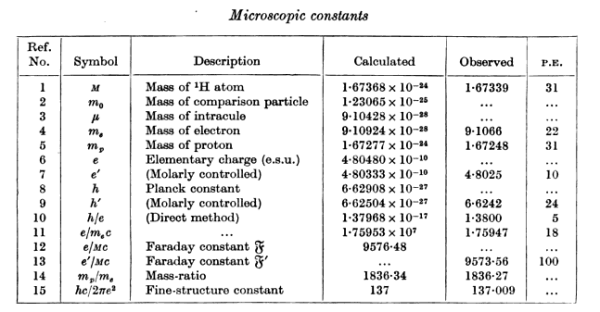Wandering into the woods unprepared and without a plan sounds like a terrible idea. But if you're interested in scientific exploration at the frontiers, confronting the unknown with whatever you happen to have at your disposal, you have to take that risk. You have to be willing to take those steps. And you have to be okay with putting your best ideas out there -- for all to see -- knowing full well that you might get the entire thing wrong.
Sometimes, that's indeed what happens. Some of the most revered and famous scientific minds in history confronted the great mysteries of nature, and came away having done nothing but set us back many years by leading the field down a blind alley. But other times, the greatest leaps forward in our understanding occur.
Brian Koberlein explores all this and more in his fantastic piece on why we shouldn't be afraid to wander into the scientific woods!
- Log in to post comments



Sometimes it is good to wander in the woods even if observational evidence shows we are on the wrong way.
Take the week interactions theory. From the beginning, the theory predicted massless elementary particles, which clearly contradicted to observations. Nevertheless the theorists wandered deeper in the woods in the same direction and they found out the spontaneous symmetry braking, the way how the elementary particles gain their mass. If they followed the observations too strictly, we do not understand the week theory even today.
I think canon rather than cannon in "and is part of the cannon big bang cosmology."
Akthoygh a cannon does make a big bang.
Brian Koberlein states:
"Many of the 'fringe' theories we see are inspired by the work of those who’ve wandered deep into the woods. The vast majority of these models have little going for them, and we should be clear to point out when models are contradicted by experimental and observational evidence."
Unfortunately, as Brian has discovered firsthand, the debunking of competing models is oftentimes undermined by the debunker's own failure to achieve fluency in that which he is critiquing.
We need only go back to February to make the point, when Brian claimed on G+ at https://plus.google.com/s/brian%20koberlein%20electric%20universe?hl=en that ...
"The EU model predicts the Sun should produce no neutrinos"
... as one of a handful of critiques of the Electric Universe.
Halfway through the thread, Brian is corrected by somebody in the comments of this article named Roberto Conde Ojeda:
"1: Neutrinos will be generated by electrically driven fusion at the photosphere and corona."
And indeed, a number of sources online reveal in plain terms that this is the claim being made by the Electric Universe theorists.
These misleading comments remain up on Brian's site to this day, without any apparent attempt at a correction. And once the correction was mentioned in the thread, there was never even an apology. We have to assume that many people who read Brian's piece to this day believe that the Electric Universe does not predict any neutrinos at all, and I personally assume from his behavior that he does not care.
We do indeed need to critique scientific ideas, but note that many people also assume that these critics are honest and accurate.
Koberlein presents the WMAP all-sky anisotropy map says this in his article:
"Then in the 1960s the cosmic microwave background was observed. Since such a background was a prediction of the big bang model, the scientific consensus began to swing towards the big bang model. Over the next several decades observation after observation was found to support the big bang."
However, the evidence does not support WMAP. The map cannot be reproduced, not even by WMAP itself. Here are the facts concerning WMAP:
Robitaille P.-M.
WMAP: A Radiological Analysis
http://www.ptep-online.com/index_files/2007/PP-08-01.PDF
Similarly the facts are not with the COBE satellite. Here are the facts about COBE:
Robitaille P.-M.
COBE: A Radiological Analysis
http://www.ptep-online.com/index_files/2009/PP-19-03.PDF